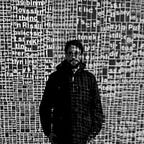Where are the maps missing?
Missing Maps aims to map the most vulnerable places in the developing world, in order that international and local NGOs, and individuals can use the maps and data to better respond to crises affecting the areas.
A year and a bit after starting the project the question of ‘Where are the map missing?’ remained. To answer this a combination of datasets was used to produce maps such as below.
I decided to make use of the World Pop project. World Pop creates detailed population maps roughly to the scale of 100m x 100m from a combination of different sources including satellite imagery and even Open Street Map.
Comparing this to progress in OpenStreetMap can give an indication of what is left to do and where should be tackled next. For simplicity I decided to first look at only buildings. Buildings are usually some of the finer details added after an initial quick mapping of an area is completed.
The first step was to understand what constituted an area being mapped. I was considering whether to use an area known to be mapped well such as Monrovia, Liberia as a key to compare against, but I was unsure of how representative this would be, especially across different cultures and towns with different population densities (or more accurately population averages per building).
To solve the issue of not knowing what to consider as well mapped a comparison of the two data sets was created as, World Pop estimate (for 100m x 100m square) divided by the number of buildings in the same area. This results in the ‘mapped’ areas tending towards zero and the unmapped areas being infinitely large (divide by zero buildings). This was a scale that could then be used across countries without having to adjust for local factors.
Dividing by zero is rather troublesome though, and loses information about the size of the population e.g. 1 person / 0 buildings now equals 100 people/ 0 buildings.
To correct for this a parameter was included to represent zero buildings — a number to divide by when zero buildings were present. I ran the code a few times adjusting the parameter as illustrated by the results below.
What I was looking for here was when Monrovia (a ‘mapped’ area) became lighter than other parts of the country. Essentially by make the parameter smaller, the map is weighted towards unmapped areas.
I took 0.01 as a nice balance between unmapped areas and areas that need to be improved. This will need to be refined in the future, but a good starting place. For the final visualisation a cutoff was applied to help focus on the areas to be prioritised and for the following maps a ratio of 200 was chosen.
Some interesting results were immediately viewable. Here we can see where half the town of Kakata is highlighted where the town’s buildings were mapped in the north, but not the south.
Here we can see where cloud cover impeded tracing satellite imagery.
There are however quite a few small areas highlighted by the World Pop data that should not be highlighted such as here in Monrovia. This suggests that the World Pop algorithm needs some tweaking.
The same process was carried out for Ecuador using data just after the recent Earthquake. The map highlights quite a few areas that need more work which have since been mapped!
Currently this process is very rough and ready and can only be used for broad brushed understanding of unmapped areas. There is a lot of room for improvements including:
- Investigate more than just buildings
- Creating more intelligent feedback on when to trust World Pop data in well mapped areas
- Create aggregated/fuzzy views to account for World Pop noise and allow easier exploring
- Create maps for all possible countries
Once refined this tool could be used to direct Missing maps (or anyone’s) tasks on where the work is needed most. The data could also be integrated to indicate likely busier and emptier squares in the HOT Task Manager.
The full code is available on github.
Liberia: maps missing
Ecuador: maps missing
Twitter: simon_b_johnson
